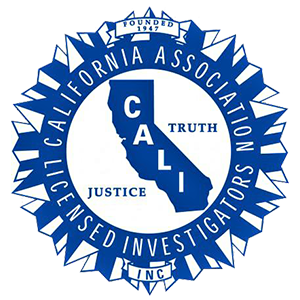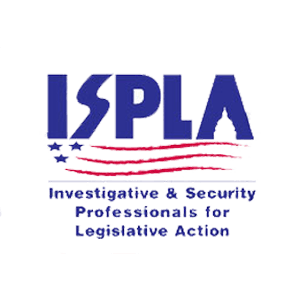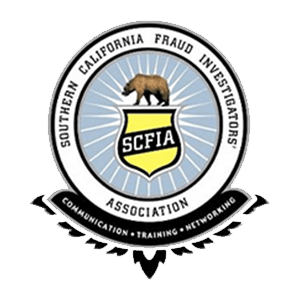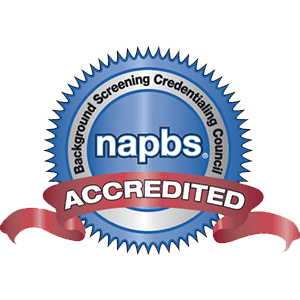Pre-employment Background or Workplace Violence? One Is a Precautionary Measure. the Other Is a Life Changer!
A critical time to begin taking measures to prevent and minimize workplace violence starts with thorough hiring practices. Effective pre-employment investigations can help you avoid hiring employees with “red-flag” behavior.
“The point of termination is perhaps the greatest opportunity for deadly workplace violence, and the firing of longer-term employees can involve the greatest risk” said Kathleen M. Bonczyk, Esq., founder, and executive director of The Workplace Violence Prevention Institute.
On February 15, 2019 five employees were killed and five police officers were wounded after a shooting by an employee at the Henry Pratt Co. warehouse in Aurora, Ill. Aurora Police Department Chief Kristen Ziman identified the gunman as 45-year-old Gary Martin, who was also killed. Three of the five employee victims included a plant manager, human resources manager, and a human resources intern. Martin was fired after working for the company for 15 years. Ziman said Martin brought his gun into the warehouse, aware that a meeting was happening. A company official said Martin had been going through a discipline procedure and had been written up before.
Scott Hall, the CEO of Mueller Water Products, which owns the Henry Pratt Co., said the company has a progressive discipline process that can result in termination. “In order to be at the final step, he would have been through previous steps,” Hall said. The gunman was being terminated for the culmination of various workplace rules violations. Martin started shooting after he was fired. Gary Martin was previously arrested six times by local police and had a felony conviction in Mississippi.
In 2019, Steve Polak, co-owner of Sunset Blvd. Investigations, Inc. (SBI), conducted a threat analysis of an employee who was facing termination. The employee’s interview was scheduled in an office far from the employee’s workplace. As the employee entered the conference room, Mr. Polak observed the handle of a knife protruding from an enclosed sheaf, that was clipped on the inside waistband of the employee’s jeans. Out of caution for the safety of all involved, he requested that the employee surrender the knife to him during the interview to which he complied. The interview was kept low key as to not cause the subject to feel threatened, which if handled wrong, could have led to a violent outburst causing harm to others.
Through our decades of experience, we’ve learned that a controlled interview, by a professional, is the safest way to avoid an altercation, keeping the subject calm, and yet meet the interviewer’s objectives to determine the facts and to gage the subject’s threat level. A technique that we utilize, is not to work from a formal list of questions, while keeping the interviews less structured and more conversational.
As defined by the U.S. Department of Labor, “a workplace violence incident is a verbal, written, or physically aggressive threat or attack intended to intimidate, cause injury or death to others in a place of employment.”
In the past, after an employee has been terminated, the former employee has called an employment lawyer. Unfortunately, it’s now the norm, that an increasing number of resentful employees are returning and inflicting bodily injury, or worse, on their former supervisors or those employees whom they feel are responsible for their termination.
According to the F.B.I., approximately 70% of all active shooter episodes occur in one of two places: Businesses and schools. In 2017, about 77% of workplace homicides involved a firearm, according to the Bureau of Labor Statistics.
Threat Assessment
Threat assessment was originally developed by the United States Secret Service to evaluate subjects who threatened public officials but has now evolved into operational activities designed to analyze dangerous situations.
In today’s ever-changing climate, threats arise from all aspects of life, from terrorist factions, campus violence, marital disputes, and disgruntled or terminated employees, just to name a few. A threat assessment investigation is proactive and is focused on preventing harm to an individual or company. The primary purpose of a threat assessment is to prevent targeted violence.
As part of Sunset Blvd. Investigation’s threat assessment investigation, we utilize many resources to evaluate an individual’s potential for causing harm. A key part of that evaluation is a thorough background check in addition to researching social media networks such as Facebook, Twitter, YouTube, and Craigslist, which provides a wealth of data in evaluating the threat assessment of an individual.
It’s our experience that social media is where individuals are more open and expressive in their opinions and feelings in providing clear evidence of their objectives. At the outset of a threat assessment, we start by collecting data from outside parties which includes interviewing people who witnessed an individual making threatening remarks or gestures. We also review any reports, notes or texts on the potential threat to help us understand the background of your situation.
When possible, after collecting all relevant data, we’ll meet with the subject who poses the threat to better evaluate their overall mental status. Our investigator will be observing the subject’s body language by looking for nonverbal, overt signs such as; odd facial expressions, excessive agitation, or verbal outbursts.
Based on the interview results, the personality of the individual being assessed, his or her mental state and the nature of their behaviors, we’ll then make an assessment on how to best protect the client.
Pre-Employment Backgrounds
Mr. Polak was recently contacted by New York attorney Theodore H. Frank, a United States Vice President Vetter, who requested assistance on a unique, comprehensive background.
At SBI we refer to these as “Scorch the earth backgrounds” because at this level of due diligence, our commitment is to leave no stone unturned. We don’t cut corners, nor only use online database searches and we hit the ground running. We actually leave our office and knock on doors. We verify facts in person, not just over the telephone. You may ask yourself, “Why in this day and age of the Internet is this necessary?” Let me explain.
For example, let’s say you pour through resume after resume when you finally find a gem within a mountain of candidates. It hits every point of your job description even the seven skills you listed. It almost sounds too good to be true, so the question becomes, “Is it?” We’ve found over the decades that very few companies thoroughly check resumes and job references.
If you hire somebody who’s altered their resume, not only could you potentially get someone who has lesser qualifications, but you might get someone who’s more likely to steal from your organization or commit other types of fraud or even espionage.
As an example, judging by its website, Altman Research wouldn’t be a bad company to have on a résumé . With offices in a beautiful skyscraper overlooking Chicago’s Millennium Park, the financial research firm says its executives have degrees from an impressive array of Ivy League universities. In reality, though, it’s probably not a great place to look for a job, for one simple reason: Altman Research doesn’t actually exist.
Its website was created by Career Excuse, a service, which for a fee, provides job-seeking customers with verifiable references from nonexistent companies. While the companies have phone numbers, websites and mailboxes manned by Career Excuse, they don’t conduct any actual business besides verifying the great work done by employees they’ve never really hired.
For a fee, Career Excuse essentially turns the hiring process into an alternate reality game, with prospective employers as the unwitting players.
William Schmidt, the creator of Career Excuse, and his staff will verify false work histories and describe their customers’ strengths in the workplace. They route calls through cloud-based phone tree systems that let Career Excuse customers even listen in on voicemails from their potential employers.
Schmidt’s company is one of several vendors offering fake reference services, ranging from small operations posting ads on local Craigslist pages to other national players like Minnesota-based Paladin Deception Services. We’ve run across this fraud scam numerous times and have been able to save our clients an abundance of headaches from hiring the applicant.
SBI’s investigators verify job histories and additional credentials while helping companies weed out applicants with dubious references or their academic equivalent, such as made-up degrees bought from online diploma mills.
We take steps beyond simply calling individual listed references, making sure to Google companies and directly call HR numbers listed on their websites, and verifying that listed companies are real and registered with state authorities.
After all, with enough scrutiny, even the most elaborately created fake companies can still be caught. All it takes is one person to drive to that address, go to that office and discover the truth. Applicants assume that not every company is going to spend the time and money to send a person out to verify their resume or application.
Based upon an analysis of cases, coupled with our own decades of experience in conducting numerous background due diligence exercises over the years, we’ve concluded that resume fraud is an epidemic.
The top ten résumé lies are as follows:
Stretching Dates of Employment
Inflating Past Accomplishments & Skills
Enhancing Titles & Responsibilities
Exaggerating Education and Fabricating Degrees
Unexplained Gaps & Periods of “Self-Employment”
Omitting Past Employment
Faking Credentials
Falsifying Reasons for Leaving Prior Employment
Providing Fraudulent References
Misrepresenting Military Records
You should be wary of candidates who claim a previously outrageous salary from a “now defunct company,” but are willing to work for less because they “like your company.”
When checking references, first research the company information online and call them directly. Don’t use the information the candidate supplied unless you have to and then take it with a grain of salt.
In the past, we’ve found that letters of recommendations from previous employers were actually letterhead stationery clients had stolen from their prior companies. We also found that company references were in fact their friends who lied for them on our initial phone conversation, telling us what a great employee they were.
Consider these few tips for avoiding any missteps in screening applicants:
When it comes to verifying employment history, ask the applicant about the months in which they began and ended working for the given employer. ‘’2017-2018” may seem like two years of employment, when in truth they could be just two months.
Question the applicant about their previous employments in detail. Directly contact previous employers for verification. Don’t trust any “800” numbers as they can be fake references. Always independently verify phone numbers.
While verifying education and training, verify the certifications as well as attendance directly with the institution. In addition, check to make sure the institution is accredited and not just a degree mill. Also verify licenses with the state agencies who’ve issued them.
Conduct civil history and criminal background searches where appropriate.This is a must for positions of trust and safety-sensitive jobs.
A national survey was conducted online on behalf of CareerBuilder by The Harris Poll . The survey included a representative sample of more than 1,100 hiring managers and human resource professionals across industries and company sizes, including 1,023 hiring managers and human resource professionals and 309 HR managers in the private sector. The survey shows that 3 in 4 HR managers (75 percent) report having caught a lie on a resume
According to Monster’s 2019 State of the Recruiter survey, 85% of recruiters said that candidates exaggerate skills and competencies on their resumes. And almost half of workers (46%) polled by staffing firm OfficeTeam, a Robert Half company, said they know someone who included false information on a resume.
There are certain fabrications job seekers may try to slip past employers more frequently than others. Take your time and get to know who you’re hiring. If you don’t do your homework, you can end up paying a substantial price. According to employers, the most common lies they catch on resumes relate to:
Embellished skill set – 57%
Embellished responsibilities – 55%
Dates of employment – 42%
Inflating Job title – 34%
Academic degree – 33%
Former Employment or Work History – 26%
Accolades/awards – 18%
Threat Assessment Interview Guidelines for HR Personnel:
Gathering information quickly, confidentially, and from as many sources as possible is the initial step for a potential workplace violence threat to be able to develop a plan to manage disturbing behaviors or assess dangerousness.
Here are some basic guidelines for conducting this type of interview:
Do not prepare questions in advance – if you know what information you need, you’ll get there without a written list of questions.
Let the discussion evolve rather than forcing it.
Build rapport early. Find something in common with the subject before hammering out questions.
If the situation permits, try not to take notes, type on a laptop, or use taping devices. Maintain eye contact for a more personal connection.
Investigators from Sunset Blvd. Investigations are always there for you! We’re just one click, text, email, or phone call away! Phone: (888) 639-4761 | Local: (213) 745-4080.
Need a private investigator?
Sunset Blvd. Investigations, Inc. provides seasoned and effective private investigation services for clients throughout the United States and Internationally. Our combined 80 years as law enforcement officers coupled with our private investigative experience distinguishes us from all other investigation businesses. If you’re in need of a private investigator, we’re here to assist you in any way we can.





